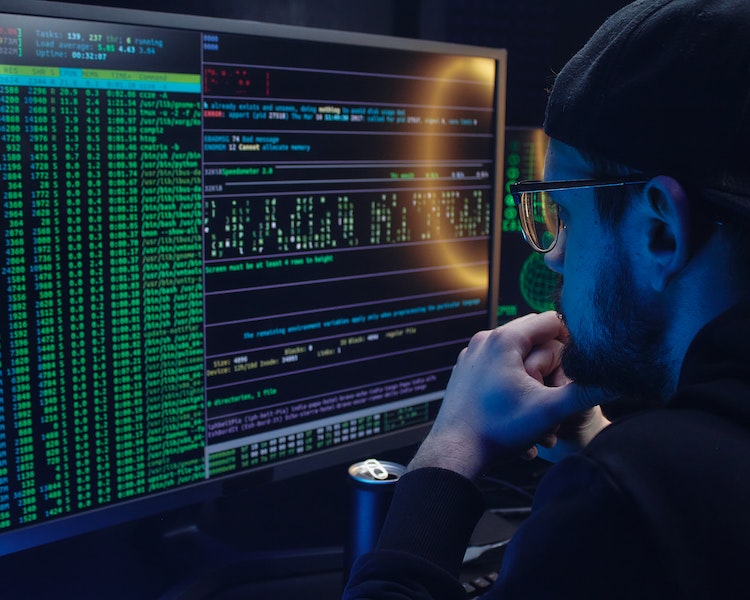AI may be a valuable tool in education, but it also poses some key cybersecurity vulnerabilities that educators should be aware of. There are a growing number of ways that hackers can exploit AI weaknesses and bypass AI security systems. Here’s a look at the top AI security vulnerabilities on the rise today and how they could impact education.
Compromised AI Training Data
AI algorithms can be extremely useful in education, but the black-box nature of most AIs poses a serious cybersecurity vulnerability. Algorithms are trained using sets of training data that teach the AI to understand or recognize something. For example, an AI might be trained to understand 8th-grade algebra problems so it can grade homework.
However, the way that AI algorithms process information is hidden in a black box, meaning glitches and biases can go unnoticed. An AI might inadvertently learn something incorrectly or make false connections from the training data. The black-box nature of AI also means poisoned training data can go unnoticed.
Hackers can taint training data to include a backdoor concealed in the AI’s logic. When the hacker wants access to the system where the AI will be used, they can simply input the key for the backdoor and the AI will recognize it from the training data. Backdoors like this can be highly difficult to detect because developers and users can’t see all the connections going on in the AI’s black box.
“The way that AI algorithms process information is hidden in a black box, meaning glitches and biases can go unnoticed.”
Hackers Are Adapting
Creating a backdoor in AI training data is a complex and time-intensive process and something that mainly only highly skilled hackers would be capable of. Unfortunately, hackers are adapting their attack strategies to bypass the threat-hunting abilities of AI. In fact, hackers are even creating their own AI algorithms that can outsmart other algorithms.
For example, hackers have developed AIs that can autonomously crack passwords to bypass access management systems. Even worse, hackers are using AI to make their ransomware and malware smart enough to get past AI-powered security protocols.
This is a serious threat to education because schools necessarily need to collect large amounts of personal information on students and families. Schools’ data is a highly appealing target for hackers, who know that compromising that data would cause panic, potentially leading to a large ransomware payout from victims.
With AI security systems at risk, educators may be concerned about what they can do to defend their students. There are solutions, though. For example, cloud-based AI systems may be safer than those based on conventional data centres. Plus, cloud-intelligent data protection systems, which are built specifically for cloud-native systems, can provide an extra layer of security for schools’ data in the event of an AI cyberattack.
Deepfakes and Faulty Image Recognition
In addition to backdoors, hackers can also exploit unintentional glitches in AI algorithms. For example, a hacker could tamper with photos to trick an AI into incorrectly recognizing an image.
Deepfake technology can also be used to disguise video, photo, or audio files as something they are not. This could be used to create a fraudulent video of a teacher or administrator, for example. Deepfakes can allow hackers to get into systems that rely on audio or image recognition for access control.
Hackers can leverage AI themselves to create highly realistic deepfakes that then become the mode of attack. For example, a 2021 fraud scheme used AI deepfakes to steal $35 million from a Hong Kong bank.
Hackers can weaponize AI in this same way to create deepfakes of parents’, teachers’, or administrators’ voices. They launch the attack by calling someone on the phone and tricking them with a voice-based deepfake. This could be used to steal money or personal information from schools, students, teachers, and families.
“Schools’ data is a highly appealing target for hackers, who know that compromising that data would cause panic, potentially leading to a high ransomware payout from victims.”
Reliance on AI for Testing and Tutoring
AI is great for automating various aspects of education and can even improve the quality of students’ education. For example, the popular language tutoring website Duolingo uses machine learning AI to help students learn at their own pace. Many other schools and educational resources are using similar technology today. This is known as adaptive AI learning, and it even helps with essential tasks like test grading.
Unfortunately, this reliance on AI is a cybersecurity vulnerability. Hackers tend to target systems that are crucial for the operation of key systems. So, if educators are relying on certain AI tutoring tools for students to successfully complete coursework, that reliance on AI can be exploited by a hacker. They could launch a ransomware attack on critical education AI algorithms or possibly even manipulate the AI itself.
This particular vulnerability is a combination of several of the threats mentioned above. Hackers could create a backdoor in an AI that allows them to tamper with the algorithm so that it grades incorrectly or teaches students incorrect information.
“If educators are relying on certain AI tutoring tools for students to successfully complete coursework, that reliance on AI can be exploited by a hacker.”
Staying Aware of Education Cyber Threats
There is no doubt that AI can be a highly valuable tool for educators. However, using AI requires caution and a proactive approach to cybersecurity to protect AI vulnerabilities from being exploited by hackers.
As AI becomes ubiquitous in education and everyday life, hackers are developing new kinds of cyberattacks designed to thwart intelligent security systems. By staying aware of these emerging cyber threats, educators can take action to protect their systems and their students.









